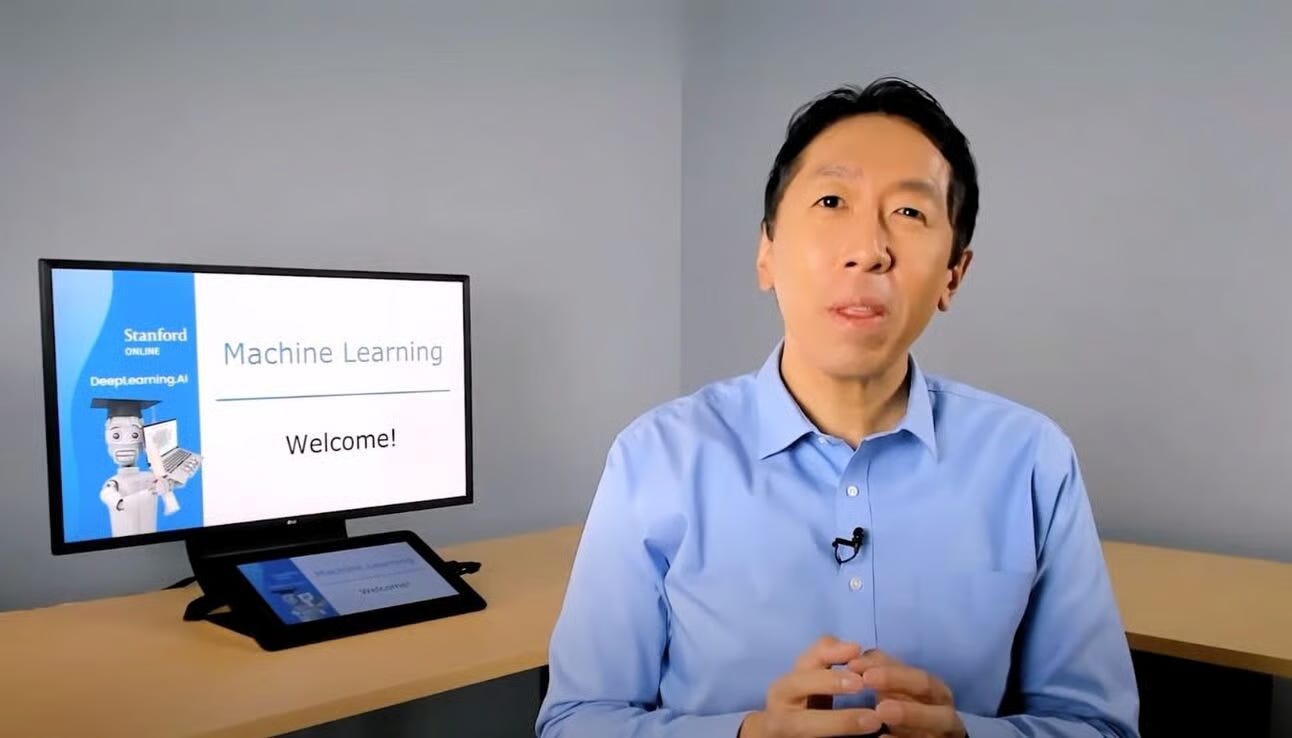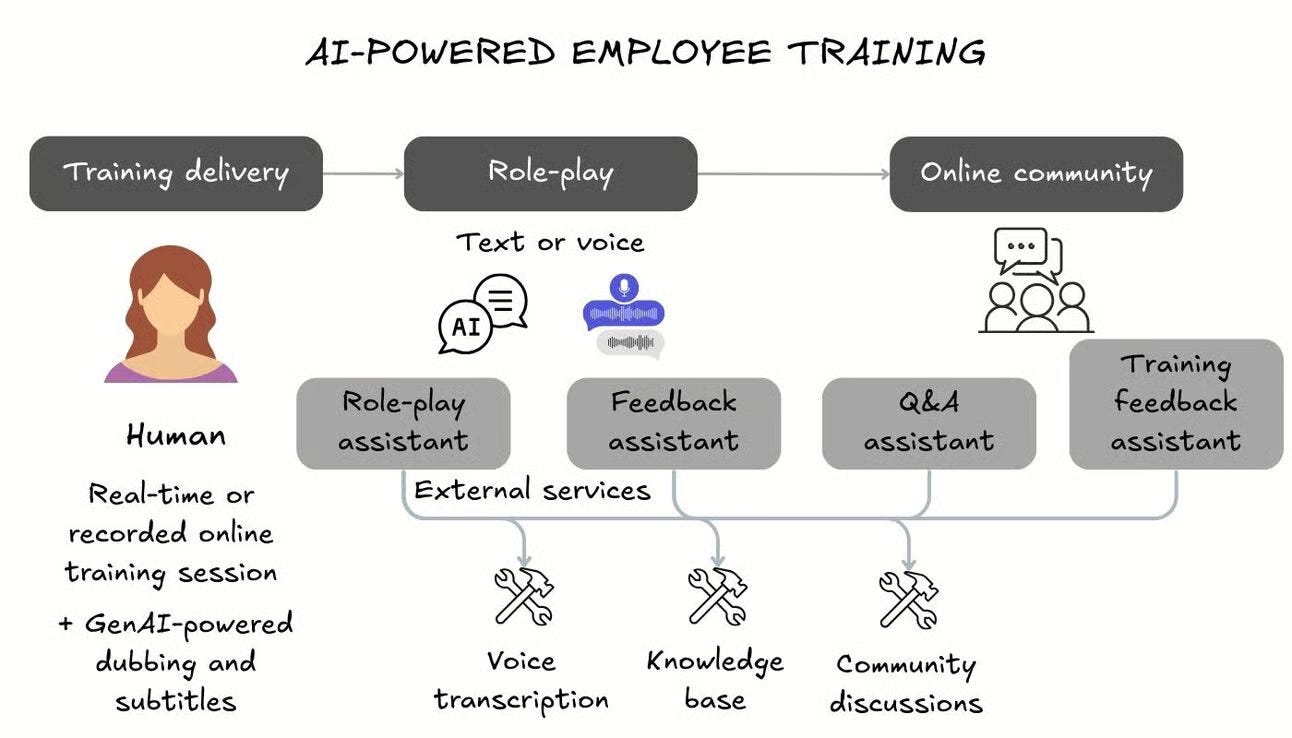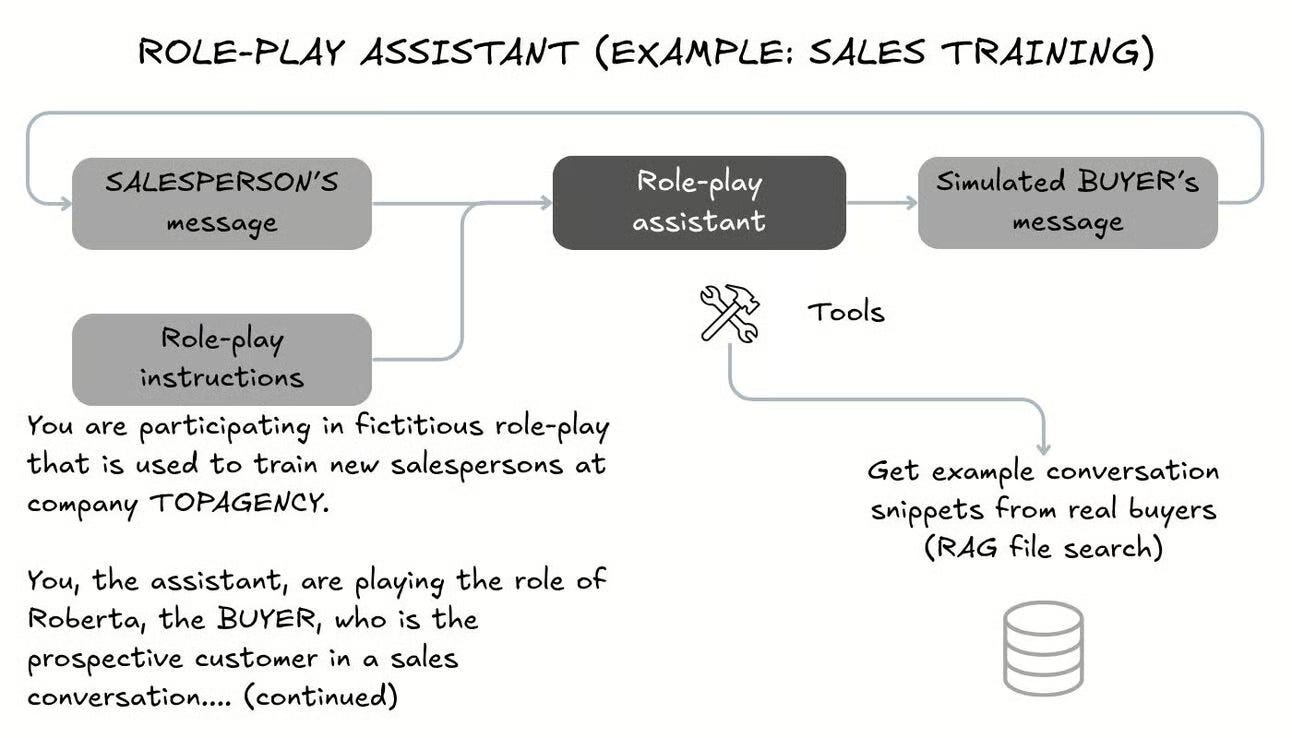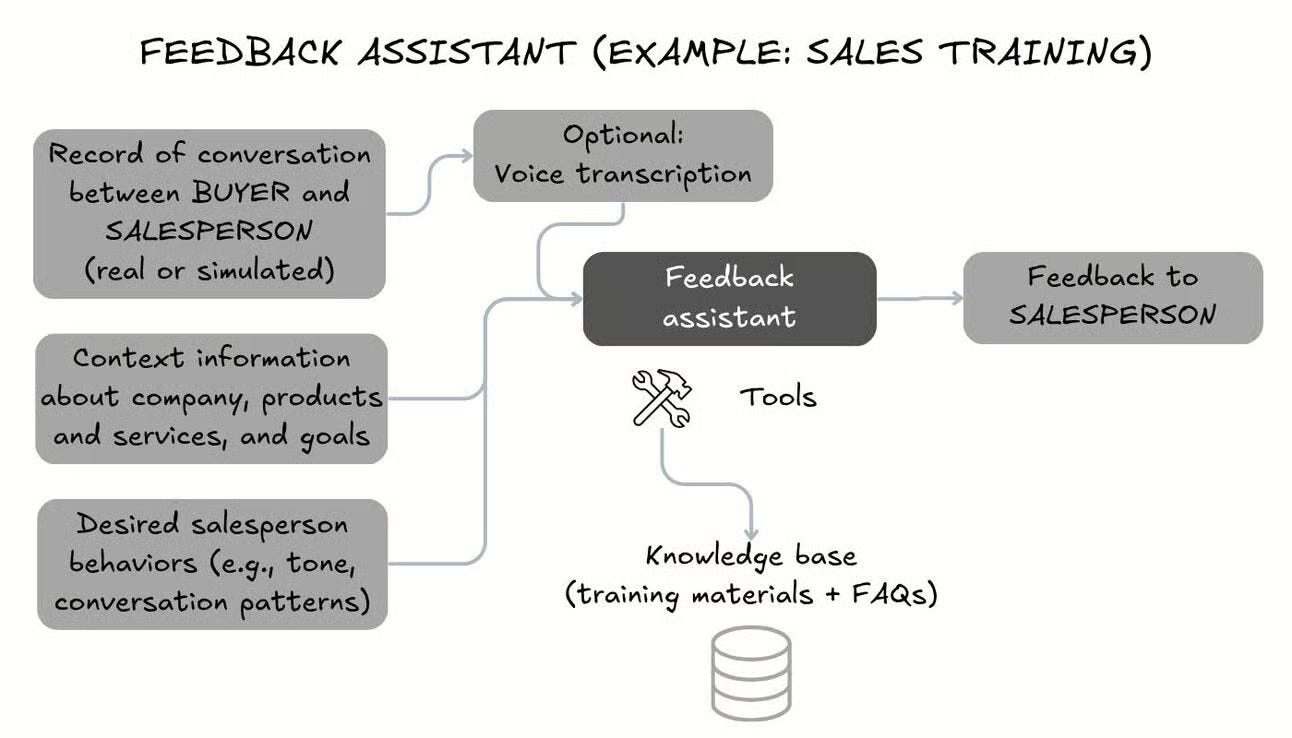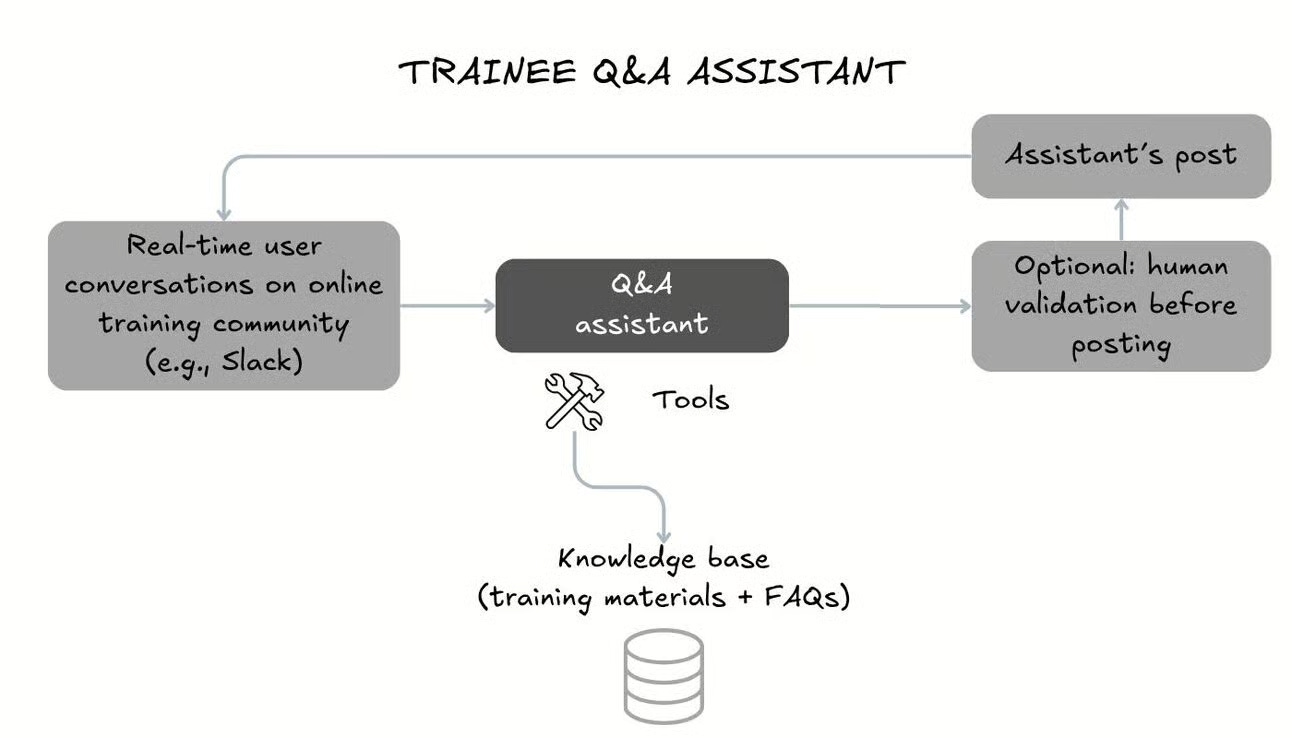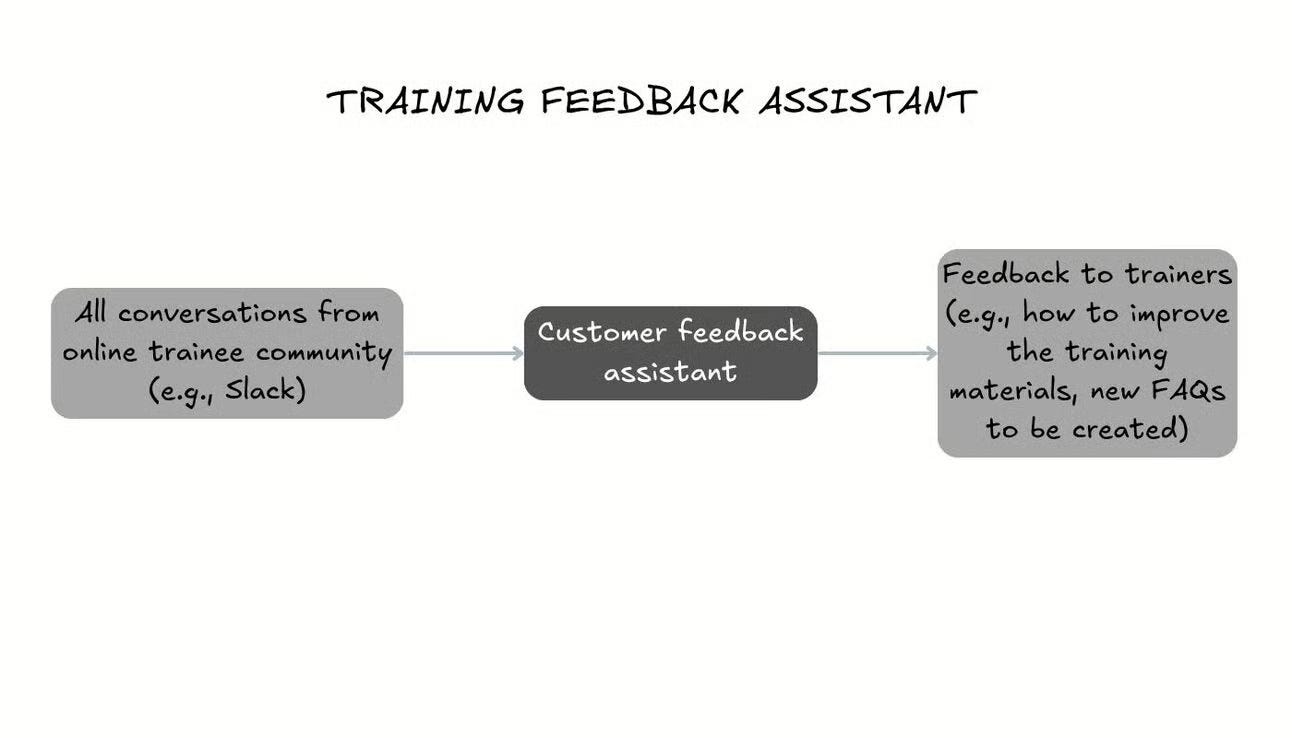Get started with AI-powered employee training
Since ChatGPT’s launch in November 2022, we’ve been conversing with chatbots daily. In February 2025, 400 million users opened OpenAI’s ChatGPT weekly, and over 600 million used Meta AI monthly (mostly via WhatsApp).
Given this level of user adoption, enterprises have started deploying internal chatbots to converse with employees too. Internal chatbots are easier to implement than external ones, due to higher tolerance for errors and tone-deaf comments.
Among internal use cases, employee training is one of the most promising areas where AI-powered chatbots are already good enough for large-scale use, not to replace remote training sessions, but to complement them.
Let’s examine how to use GenAI for employee training and how to get started. A demo with code is provided in the post.
Online training: what’s already working and what can be improved?
Most mid-sized and large companies already offer online employee training programs, either created internally or obtained from MOOC vendors.
Such online trainings are usually delivered by humans, either in real-time or from pre-recorded sessions. There is, in my view, no need to change that, and you should continue to look for trainers who know their subject, have a vast repository of “war stories” to share with the trainees, and bring a combination of energy, gravitas, and plain-spokenness.
A great way to see how humans can excel at training delivery is to watch Andrew Ng’s Machine Learning Specialization online course.
In short, humans can already deliver great training at scale. One of their main flaws, which is that they don’t speak every language on Earth, can easily be addressed by using GenAI-powered dubbing or subtitle platforms like ElevenLabs and Descript.
However, there are two areas where online training programs show clear improvement areas, where GenAI can make a difference:
Simulations (role plays). Most training programs include quizzes to test the trainee’s knowledge, but these tests lack interactivity. Ideally, you’d want the trainee to experience realistic role-plays and receive fine-grained feedback during sales training or a course on managing team performance.
Q&A (community forums). Online programs usually invite trainees to join an online forum to ask questions. Even with proper staffing, it takes hours for a trainee to get an answer, interrupting their flow.
The AI-powered employee training assistant
The AI-powered employee training assistant includes three complementary components:
Training delivery, which can still be handled by a talented human.
Role-play program, including exercises immediately after the training but also at regular intervals (e.g., 1, 3, 12 months). What is important is not just the role-play but also the personalized feedback.
Online community, which can be hosted on any discussion platform (e.g., Slack) and can be staffed by a Q&A assistant that answers questions immediately using training materials, a FAQ repository, and past discussions. In addition, a training feedback assistant should listen to trainee discussions to understand and summarize feedback about what aspects of the training can be enhanced.
The diagram below outlines these components.
Role-play assistant
The role-play assistant is a chatbot that participates in role-play sessions to complement the employee training session.
For example, the role-play assistant could play the role of a buyer so that a salesperson can practice their sales conversation skills.
To generate responses to the salesperson’s messages, the assistant can leverage general instructions provided to it, as well as a knowledge base of past buyer messages.
The following diagram describes the assistant’s architecture.
The chatbot can be text-based or voice-based.
To implement a voice-based assistant, you can use OpenAI, Google Gemini, or Assembly AI APIs to transcribe the salesperson’s voice into text. Then, you can use a voice generator like ElevenLabs to convert the assistant’s response into a spoken message.
Here is an example of a prompt to guide the assistant.
You are participating in fictitious role-play that is used to train new salespersons at company TOPAGENCY.
You, the assistant, are playing the role of Roberta, the BUYER, who is the prospective customer in a sales conversation.
The user is playing the role of the SALESPERSON.
Throughout the conversation, you answer the SALESPERSON's questions and ask questions of your own to role-play the scenario below.
Here are the scenario guidelines.
1. About the BUYER
The BUYER is the marketing director of a cryptocurrency project called NEWBLOCKCHAIN.
The BUYER is looking to engage a graphic design agency to work on social media visuals, web banners, physical posters and video animations to promote NEWBLOCKCHAIN.
The BUYER's key decision creteria are: experience in the cryptocurrency industry, track-record of coming up with original ideas, speed of delivery, and budget.
The BUYER's budget is between 500 USD and 1000 USD per month, but they are not keen to disclose it initially to the SALESPERSON in order to get the best deal.
Regarding speed of delivery, the BUYER expects 2 business day turnaround on images and 72h turnaround on videos.
The BUYER is not keen to work with agencies that have been in operation for less than two years, and the BUYER thinks that a company size of at least 25 people is required to deliver against turnaround timelines.
2. Goals of the conversation
From the BUYER's point of view, the most important goal is to avoid wasting time with unqualified vendors, given that the BUYER receives lots of messages from prospective vendors.
The BUYER wants to determine quickly if TOPAGENCY is likely to meet the selection criteria, particularly in terms of cryptocurrency industry experience and track-record.
As the BUYER receives lots of proposals, they don't feel like prying the information out of the SALESPERSON.
Rather, they expect the SALESPERSON's pitch to be good enough that it makes it worthwhile to keep the conversation going.
Once the BUYER has established whether TOPAGENCY is a serious vendor, they can decide to either continue or terminate the conversation.
If the conversation continues, the BUYER's secondary goal is to provide enough information to TOPAGENCY so that they can prepare a proposal and price quotation.
3. Other guidelines
The conversation is happening by direct message over telegram.
We expect the BUYERS to send no more than 30 messages, given that they are busy.
The BUYER's messages tend to be short and sometimes include typos, given that the BUYER is busy.
To obtain examples of past BUYER messages, the assistant may call the file_search function, which returns examples of conversations between other buyers (who may have different needs than this BUYER) and other TOPAGENCY salespersons.You can find the full demo and code at this link for details:
Visit the notebook.
Feedback assistant
The feedback assistant listens to real or simulated conversations completed by the trainees practicing the skills taught by the training program. Based on these transcripts, general instructions, and the training materials and FAQs, the assistant generates personalized feedback for the trainee.
The following diagram describes the assistant’s architecture.
Here is an example of a prompt to guide the assistant.
As an expert in business to business sales, please evaluate the following conversation between a BUYER and a SALESPERSON, and provide feedback to the SALESPERSON about what they did well and what they can improve.
The conversation is provided between the <conversation> tags below.
Be specific in your feedback, quoting specific examples of what they did well and what they can improve, and giving examples of what the SALESPERSON could have said.
You are provided some context about the role-play and the salesperson, between the <context> tags below.
<context>
The SALESPERSON works for TOPAGENCY, a graphic design agency that employs graphic designers to create images and video animations.
TOPAGENCY has around 40 employees around the world, working remotely. It was created 3 years ago, in 2022.
TOPAGENCY has limited experience working with customers in the cryptocurrency industry, but they have successfully established long-term working relationships with technology companies like Slack, Atlassian and Stripe.
From TOPAGENCY's point of view, the most important goal of the conversation is to capture information from the BUYER in order to prepare a proposal that has a high chance of success.
The SALESPERSON must understand what the BUYER is looking for, how many designs monthly they will require, and what is their approximate budget.
They must also make the BUYER agree that the next step is to discuss a proposal from TOPAGENCY.
</context>
The desired SALESPERSON behaviors are listed below, between the <desired_salesperson_behaviors> tags.
<desired_salesperson_behaviors>
* Build rapport authentically: Start with brief small talk before transitioning to business, but find genuine connection points rather than forced conversation.
* Listen more than you speak: Aim for an 80/20 ratio (them speaking 80%).
* Focus on problems before solutions: Uncover pain points and business impact before discussing your product.
* Ask strategic questions: "What challenges are you facing with your current solution?" "What would success look like for this project?"
* Demonstrate industry knowledge: Show you understand their sector's unique challenges without being generic.
* Present value, not features: Connect your solution's capabilities directly to their specific business outcomes.
* Address objections with curiosity: "That's interesting, can you tell me more about your concern?"
</desired_salesperson_behaviors>
Now, here is the conversation:
<conversation>
{role_play_conversation_example_str}
</conversation>You can find the full demo and code at this link for details:
Visit the notebook (same notebook as above).
Trainee Q&A assistant
The trainee Q&A assistant is connected to the platform used for online communication between trainees and trainers (e.g., Slack). It listens to trainee questions and concerns and answers promptly based on training materials as well as an ever-expanding FAQ list (frequently asked questions).
The following diagram describes the assistant’s architecture.
Training feedback assistant
The training loop needs a mechanism to collect and process trainee feedback. The training feedback assistant listens to all online communications between trainees and trainers. At regular intervals (e.g., weekly), it generates detailed feedback for the trainers about improving the training, including materials, delivery, and new FAQs.
The following diagram describes the assistant’s architecture.
Takeaway messages
AI-powered employee training represents a significant untapped opportunity.
Integrating GenAI assistants for role-play, feedback, Q&A, and training improvement can enhance training effectiveness while preserving the human element.
The key is to view AI not as a replacement for human trainers, but as a tool to augment their capabilities. This leads to more engaging, personalized, and efficient learning experiences while reducing training costs.


